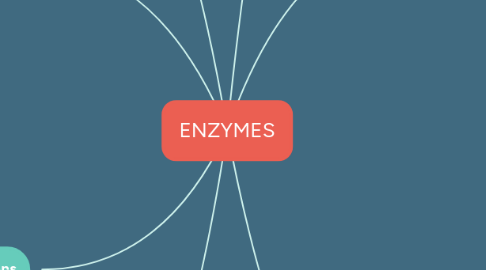ENZYMES
by Farah Batrisyia


1. Action of Enzymes
1.1. Dough mixing Dough proofing Freezing Frozen storage Thawing Baking Cooling Bread storage
2. Action of Enzymes on Starch
2.1. Starch hydrolysis by α-amylase also results in - Weakening of starch gel in the baked bread - improved crumb softness - Stabilization of gas cells – important in frozen dough products
2.2. Anti-staling effect of α-amylase
3. Action of Enzymes on Pentosans
3.1. Pentosan (mainly arabinoxylans) contribute 2-3% of wheat flour, up to 5% in wholemeal flour and 8% in rye flour.
3.2. Insoluble pentosans hinder the development of gluten
3.3. Pentosans bind ~ x10 their own weight of water – 1/3 of water binding capacity of flour
3.4. Degradation of pentosan (e.g. by xylanases) causes water redistribution from pentosans to starch and gluten phase - dough become softer & easier to process
3.5. Addition of xylanase alleviate problems caused by addition of dietary fibre
4. Action of Oxidative Enzymes
4.1. Gluten proteins in dough, unoxidizes form (free thiol functions), high mobility of the protein causes insufficient properties, e.g. low volume yield
4.2. Gluten proteins in dough, oxidized form (disulfides), formation of a protein network causes spesific improving effects, e.g. high volume yield
5. Can be used to prolong the freshness of bread, to enhance the browning of the crust, to ensure a sufficient supply of fermentable sugars in frozen dough, to break down the pentosans in wheat flour which hinder the development of gluten.
6. Industrial Application of Enzymes
6.1. Fruit juice/wine - Juice extraction - Clarification - Starch hydrolys
6.1.1. Pectinase Cellulase Hemicellulase Starch hydrolysis
6.2. Baking - Dough conditioning - Bread volume - Crumb structure - Crust colour - Antistaling
6.2.1. α-amylase Amyloglucosidase Protease
6.3. - Fat modification - Oxygen removal - Confectionery softening
6.3.1. Lipase Glucose oxidase Invertase
6.4. Starch - Glucose syrup
6.4.1. α-amylase β-amylase Amyloglucosidase Pullulanase Glucosisomerase
6.5. Dairy - Cheese - Cheese flavour - Lactose hydroly
6.5.1. Rennin Lipase Protease Lactase
7. Function of Enzymes in Baked Goods
7.1. Processability - Shorter mixing & proofing time, better dough stability
7.1.1. Proteases, hemicellulases, oxidases, lipases
7.2. Volume - Larger volume, esp. for highfibre products
7.2.1. α-amylase, hemicellulases, cellulases, lipases, (proteases
7.3. Stability - Antistaling effects, extended shelf life, improved freshness
7.3.1. α-amylase, hemicellulases
7.4. Texture - Softer crumb, fine & regular pore structure, better crispness, less hygroscopicity
7.4.1. α-amylase, hemicellulases, proteases, (lipases)
7.5. Colour - Browning effect, improved crust colour, bleaching effect
7.5.1. α-amylase, glucoamylases, (hemicellulases), lipoxygenases
7.6. Flavour - Production of fermentation substrates & aroma precursors
7.6.1. α-amylase, proteases, lipoxygenases, lipases, glucose oxidases
7.7. Nutritional properties - Increased amount of total & soluble dietary fibre, reducedfat baking
7.7.1. hemicellulases, cellulases
7.8. Replacement of chemicals - Replacement of bromate, sodium metabisulphite, vital gluten
7.8.1. α-amylase, hemicellulases, cellulases, lipases, proteases, lipoxygenases, glucose oxidases
